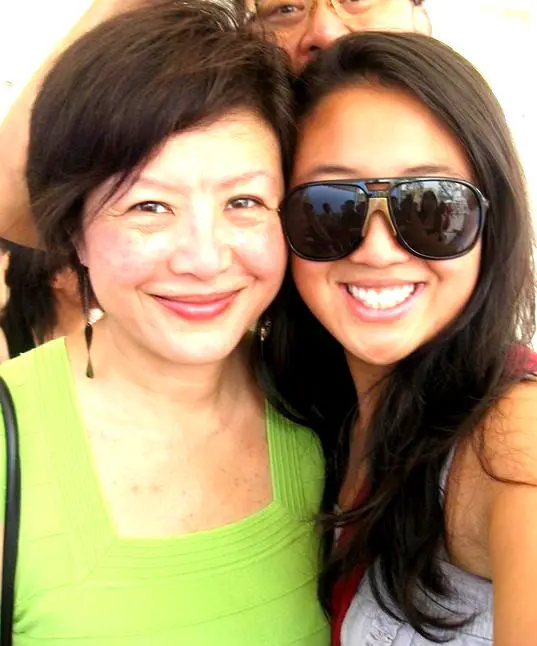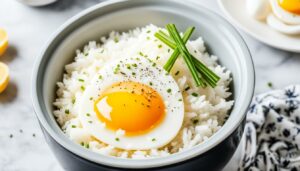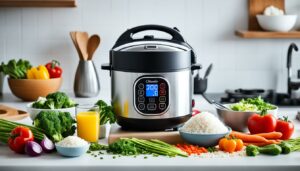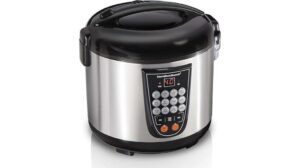Brown rice is popular because its packed with goodness as its low in fat and high in fiber. But, it’s not always the easiest to cook so let’s uncover some cooking tips to get the best taste while maintaining its health benefits.
Rice is one of the most versatile foods that you can eat. It can be used as an appetizer, as the basis of a tasty meal or as a complete main course and even a dessert. I can’t think of another single ingredient that has so many uses. And when it comes to varieties of rice, brown rice, in particular, is enjoying a huge surge in popularity because not only is it versatile but its also renowned for being extra healthy.
I Recommend This Rice Cooker For Brown Rice
- 5-1/2-cup computerized rice cooker and warmer with advanced Neuro Fuzzy logic technology. Wall mountable
- Multi-menu selections; automatic keep-warm, extended keep-warm, and reheat cycles. Electrical Rating - 120 volts / 680 watts
- Spherical, nonstick inner pan allows for uniform heating; LCD clock and timer; retractable cord
- Menu settings include white (regular/sushi, softer or harder), mixed, porridge, sweet, semi-brown, brown, rinse-free and quick cooking
- Measures approximately 14 by 8 by 9 inches; 1-year limited warranty, Dimensions (W x D x H) : 10-1/8 x 13 x 8-1/8 inches
- Includes 2 measuring cups, nonstick rice spoon/scooper, rice spoon holder, and recipes . NOTE: Please ensure to measure rice in the cup that comes along with the product O
Prices pulled from the Amazon Product Advertising API on:
Product prices and availability are accurate as of the date/time indicated and are subject to change. Any price and availability information displayed on [relevant Amazon Site(s), as applicable] at the time of purchase will apply to the purchase of this product.
We have known (and it’s been back up scientifically) for years that brown rice is very good for you. It has a high GI so provides lots of energy, its low in fat and high in fiber so , what’s not to love? Well, for one thing it tastes a bit different and its texture is much ‘harder’ and not suitable for dishes that require sticky rice – like sushi for example. But, given the right treatment, its still great for most dishes. So, lets find out how to cook brown rice but keep all of the health benefits.
Table of Contents
The Problem with Brown Rice
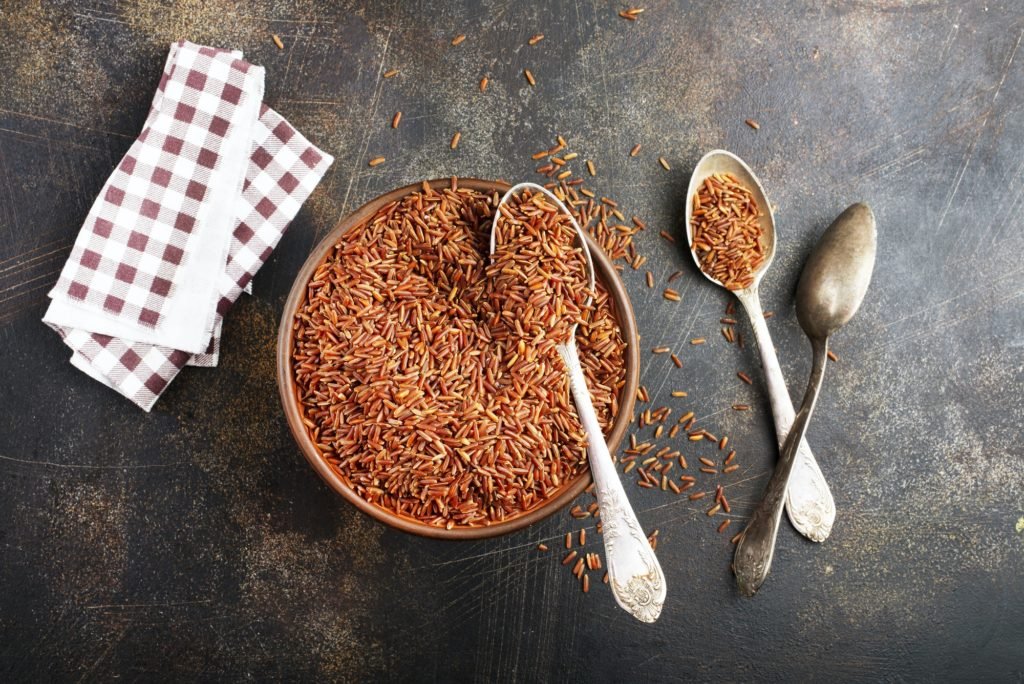
Lots of fitness experts don’t like rice – but I love it so and i know lots of my friends are sold on its health benefits. So, what to do?
Well, I’m pretty sure it doesn’t actually help me lose weight but it tastes great and is full of fiber so I really can feel a difference in my performance while playing sports or exercising if I’ve eaten brown rice before I take part.
As you may know, the bran layer in brown rice is high in fiber. If you take a close look at the grains you will see that white rice is smoother and well-polished whereas brown rice has only the husk removed – and that’s a good thing because not only does this make it high in fiber but also keeps it rich in magnesium and vitamin B.
The only problem with brown rice is that its tricky to cook properly. However, with these simple tips, you can not only enjoy the health benefits but you can also get great-tasting rice with the perfect consistency. So, lets find out how to do it…
To Soak or Not to Soak – That is the Question?
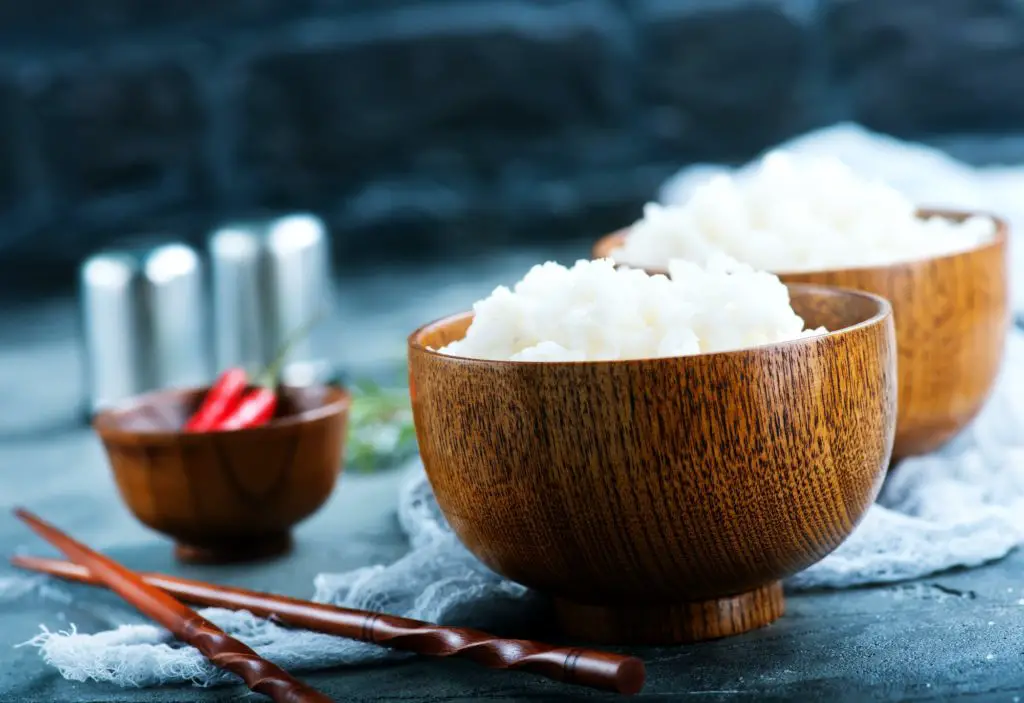
One of the main issues with brown rice is that it takes a lot longer to cook – and by a lot I mean twice or even three times longer than white rice! It is also notoriously difficult to get exactly the right texture – and no one want to eat bullet hard rice grains!
So, one of the best ways I’ve found to cook rice is by soaking it first. This also has the added benefit of releasing additional enzymes
Like most whole grains, soaking brown rice makes it easier to digest and helps in neutralizing phytic acid so, although it takes more time, there are several benefits to soaking brown rice.
Here’s how to soak and cook brown rice:
- Measure a cup of brown rice
- 2 cups of warm water
- Put the rice in a medium-sized bowl and add the warm water.
- Mix it well until well-combined
- Cover the bowl and place it in a warm area in your kitchen
- Soak your brown rice for about 8-12 hours or overnight
- After the soaking period, drain the water and cook rice normally.
Simple, and, of course, you don’t need to stand and watch it so if you are organized there’s no extra work. After soaking, you will notice the rice feels softer yet the nutty flavor is still there.
Germinated Brown Rice or Sprouted Rice
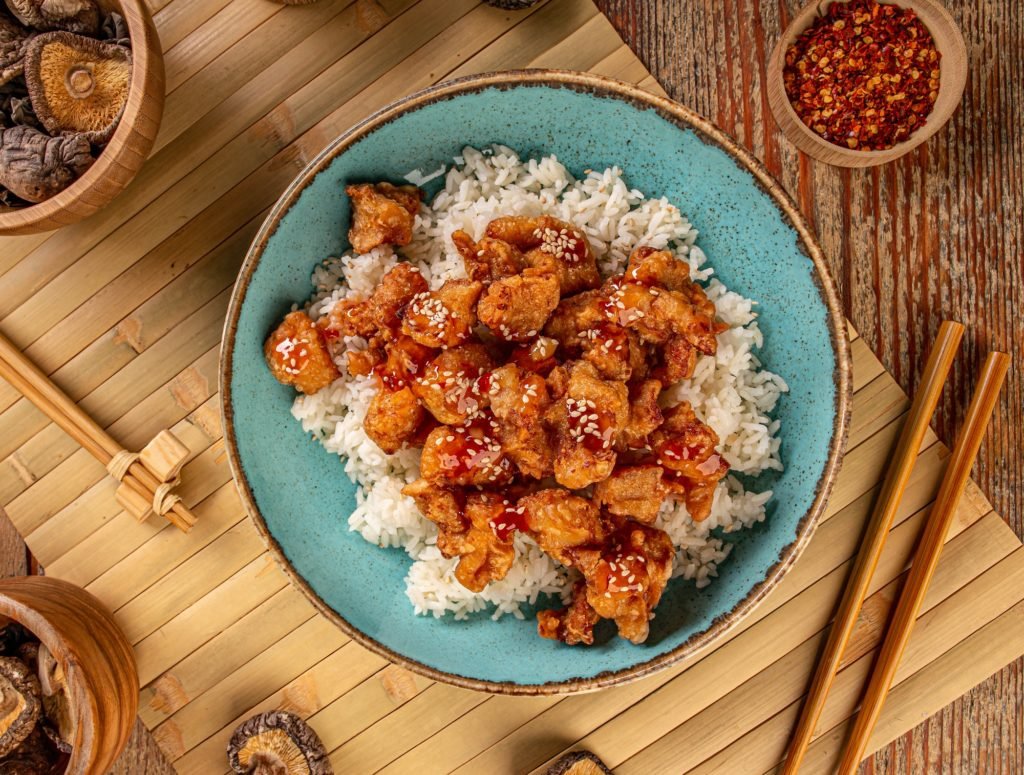
Another healthy option is to sprout the rice! Sprouted grains and whole grains actually contain the same nutrients but in varying quantities.
Studies have shown that sprouted grains break down some of the starch, which increases the amount of nutrients in the grain. This means germinated rice is healthier compared to regular brown rice, so what’s not to like?
The longer you soak brown rice the more it releases essential nutrients.
One of the healthiest kind of brown rice is the GABA or gamma-aminobutyric acid.
You can actually make your own GABA brown rice by soaking the grains in water for 4-20 hours with a temperature of 30–40 °C (86–104 °F).
GABA brown rice is also readily available at the groceries where you can buy them at small portions, but you can also try it at home.
How to Sprout Brown Rice
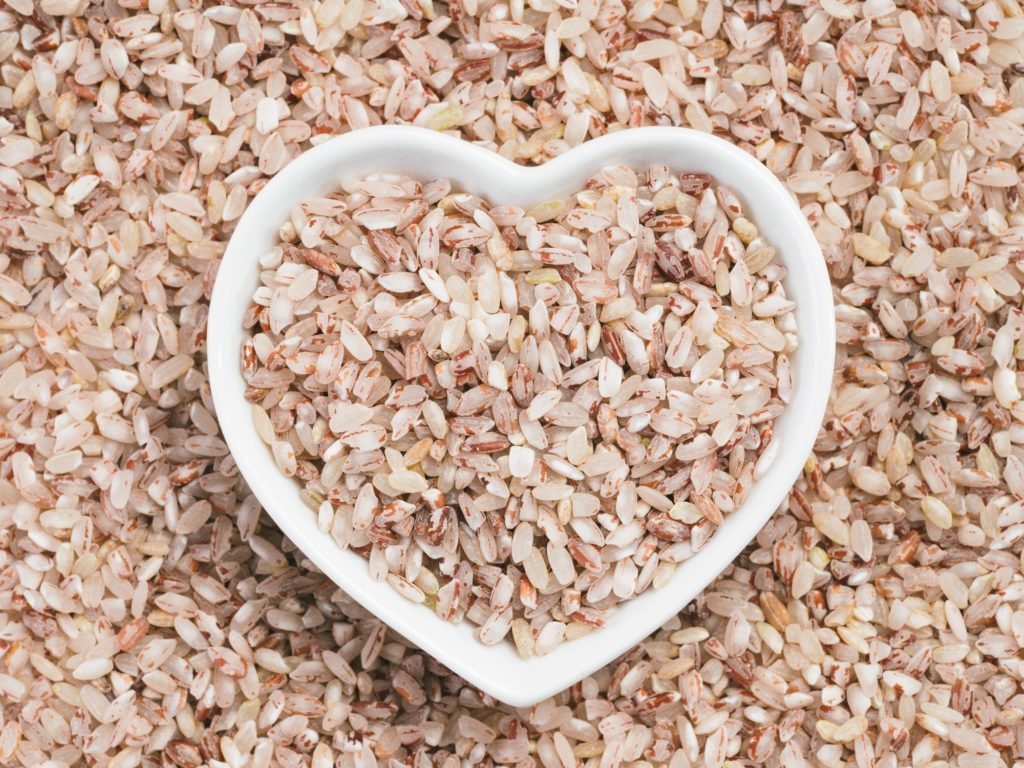
Although germinating brown rice might seem like a time-consuming and tricky process, it’s actually really simple – although it does require a bit of patience..
Here are the steps:
What you will need:
- Measure half a cup of brown rice (or more if you are planning ahead for a few meals)
- Sprouting container or jar (any jar will do)
- Water
Soaking Method:
- Put the grains into the sprouting jar
- Fill the jar with water, enough to cover all grains. Cover with a lid or a sprouting screen.
- Soak for 12 hours or more
- Drain the water. Be careful not to lose the rice at this stage
- Rinse the grains 3 times in clean cold water
- Repeat the above steps for 2-3 days. After this time you will notice sprouts forming
- Wash and drain the sprouts completely
- Cook right away or you can store in the fridge for up to 3 days.
So, you see, really simple although it does take some time. The only thing is – don’t be tempted to sprout large batches of rice to save time as – and I have said this before – rice should only be stored for a few days before eaten as bacteria grow quickly in cooked (or soaked) rice and you run the risk of food poisoning if you leave it too long.
Which Size Grain?
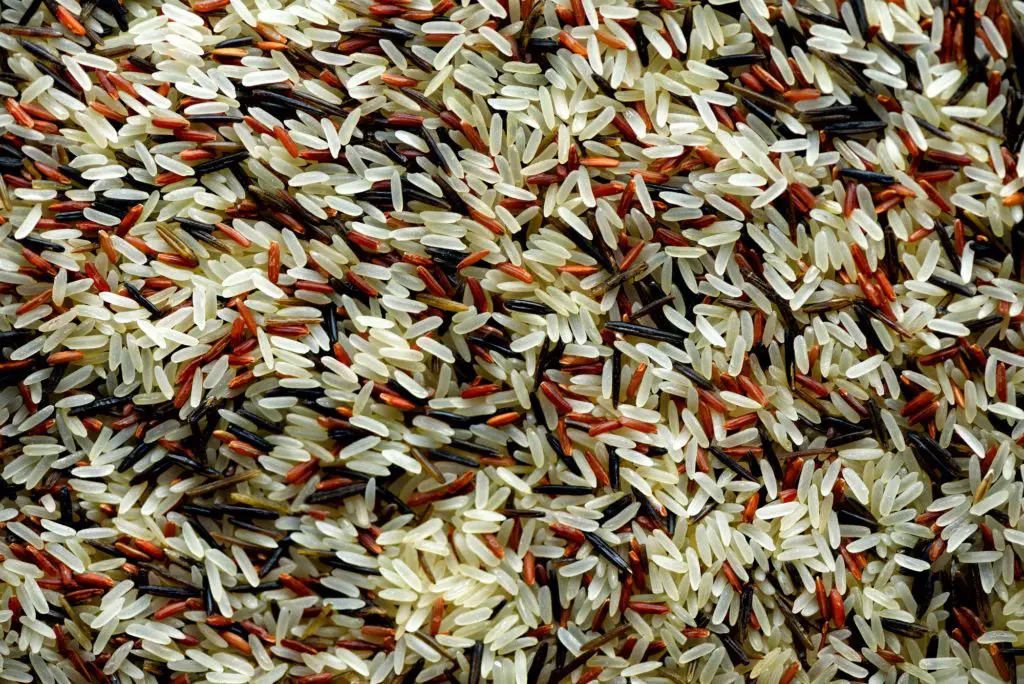
Like white rice, brown rice is also available in a range of different sizes. Size affects the texture and taste of the rice with short-grain brown rice tending to be softer and fluffier.
When cooked, short-grain brown rice is also more starchy and stickier so its often used in soups and desserts where starch is required. Of course, brown rice isn’t as starchy as white rice.
I tend to use medium or long-grain brown rice is because of the lower starch content and if I need pudding rice I will just use white – its nice to mix things up.
How to Store Brown Rice
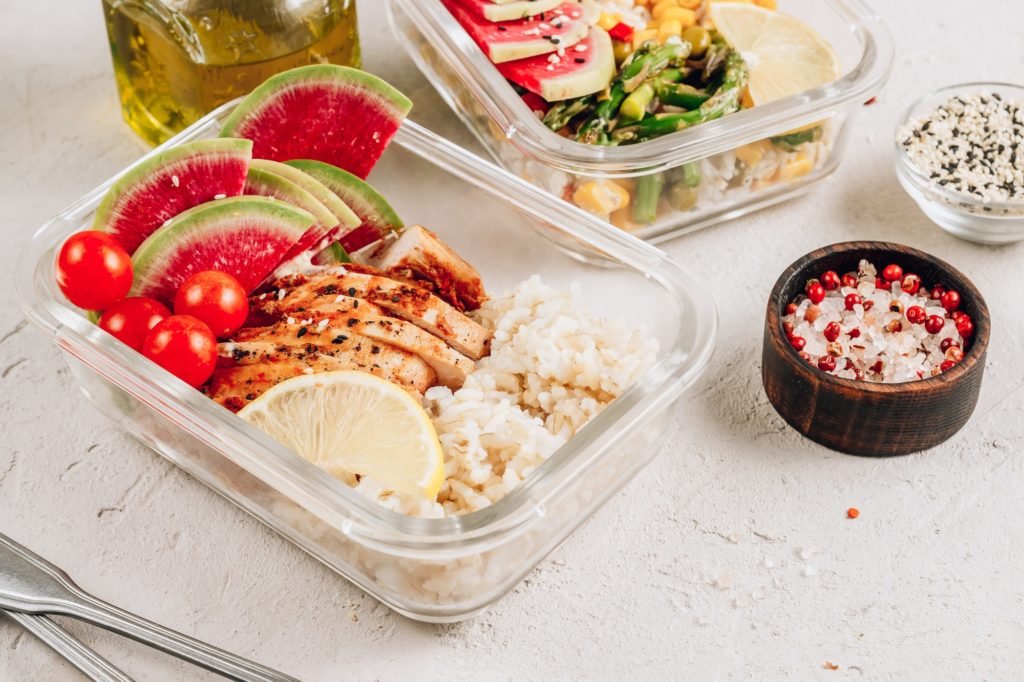
Luckily, storing leftover brown rice is really straightforward.
Uncooked brown rice stays fresh for about 6 months as long as you store it inside an airtight container and at room temperature. Cooked brown rice, however, will stay edible for around a week as long as its refrigerated but, personally, I would never leave it that long as bacteria grow quickly in cooker rice and it can actually lead to serious food poisoning so I always consume it at least a day or two after cooking.
Germinated brown rice has a shorter shelf life of around 2 days
What to Do with Leftover Brown Rice?
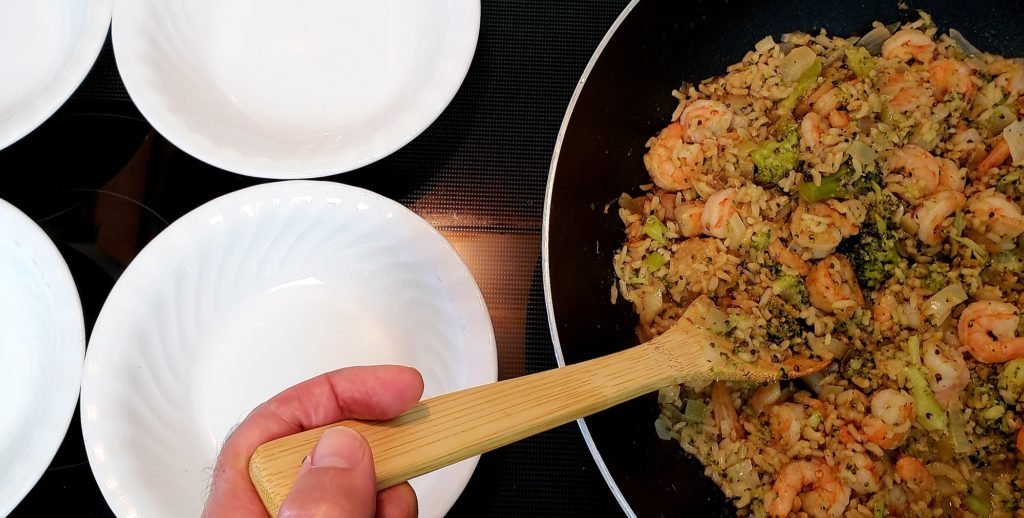
Even the best cooks will have leftovers – hey, you just like to make sure everyone has plenty to eat – right? But, what can you do with any leftover rice, especially since food costs are getting higher and we all want to prevent waste?
Well, never fear because you don’t need to throw any food in the bin. In fact, here are some great dishes you can use with leftover brown rice:
- Fried brown rice
- Cold brown rice salad
- Taco brown rice
- Brown rice stuffing
How to Cook Perfect Brown Rice
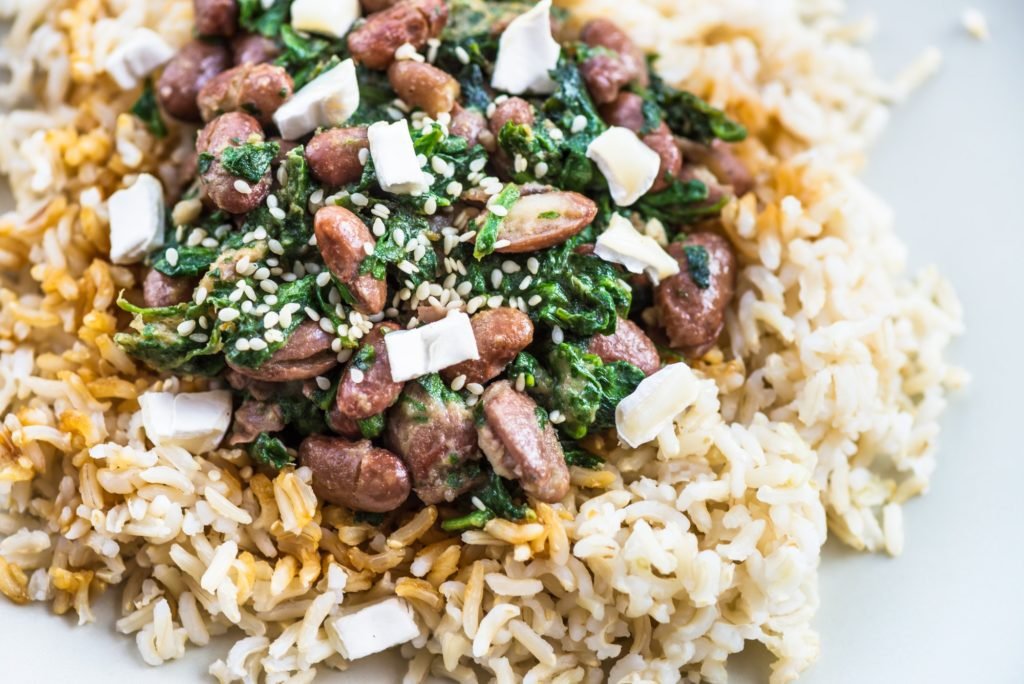
When it comes right down to it, many of us are afraid to cook brown rice because we think it will go wrong. But, actually, its no harder than cooking white rice – you just need to alter the cooking times slightly and, of course, it’s extremely important to add the right amount of water.
Most good varieties of brown rice will have instructions printed on the packaging but here are the general rules I use:
- Long-grain brown rice needs 1 and 1/4 cup of water per cup of rice
- Short-grain brown rice needs 1 and a half cup of water
Note: If you are using germinated or sprouted brown rice like I discussed above, you can reduce the water ratio and use the standard 1:1 to prevent the rice from going mushy.
One of the longest-running arguments between my friends and I is the stove-top method vs. rice cooker when it comes to rice cooking. As you can imagine, my friends all seem to prefer stove tops or rice steamers in the case of my Asian friends whereas I’m definitely a rice cooker gal – no surprises there though!
Now, theres no doubt that stove-top is simple and very practical. You don’t need to spend extra money buying a cooker which will also require extra space on the kitchen counter. You can cook almost anything on your stove and brown rice is no exception. But. lets take a look at what you have to do..
- Measure a cup of brown rice
- Wash and rinse over cold running water until dust, dirt, and starch are gone
- Place the rice in a pot and add the correct water ratio
- Cover the pot and let it boil. This should take approximately 30 minutes over medium-high heat
- Randomly check if the water is absorbed
- Reduce the heat to its lowest and let it sit for 15 minutes
- Fluff the rice with a fork or spatula and let it rest for another 10 minutes
- Serve!
Ok, its pretty simple, but its also pretty time consuming and means you have to stand over the pot the whole time. It also needs some experience and skill. However, compare that to the method I use with my rice cooker to get even better results…
- Measure a cup of brown rice (no change there)
- Wash and rinse over cold running water until dust, dirt, and starch are gone – uh huh
- Place the rice in a pot and add the correct water ratio – so far its the same
- Close the lid and hit the brown rice program
- Go and watch some tv
- Come back in about 15-20 mins and enjoy perfect brown rice
And thats it – hands off, no mess and no hassle. Now, which is the best way to cook perfect brown rice again?
Which Rice Cooker is best For Brown Rice?
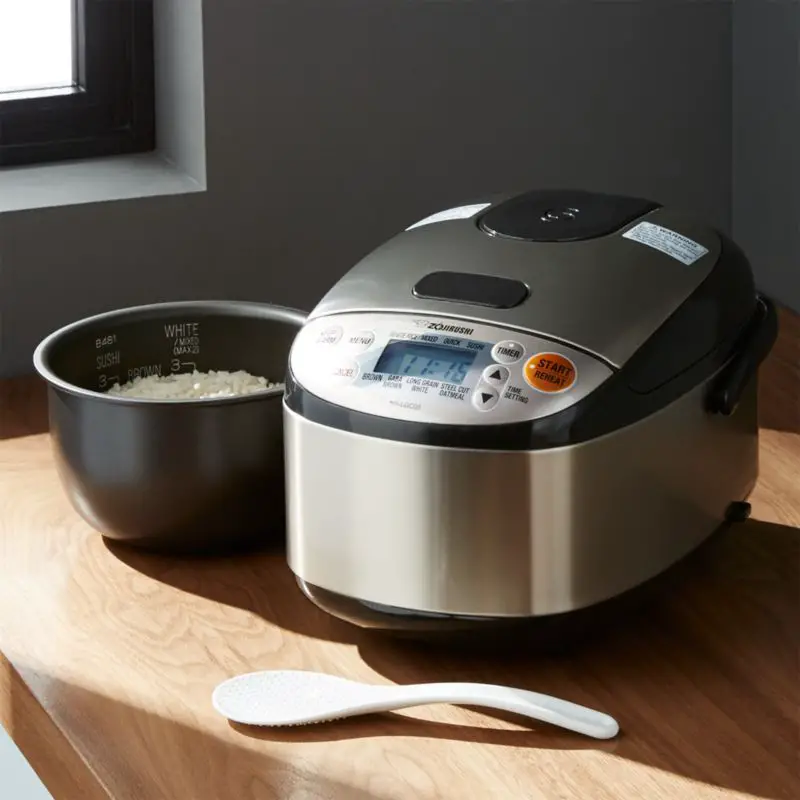
As technology gets smarter and cheaper we are starting to see the kinds of features that were once reserved for high-end cookers appearing on mid-range or even budget devices. .
I’ve already said that brown rice takes a long time before it will be cooked entirely and cooking it on the stovetop will require you to monitor and randomly check on it. However, if you use a rice cooker, like Zojirushi NS-ZCC10 which I highly recommend, it already has a brown rice cooking setting. All you have to do is…
- Measure the right amount of rice with a special measuring cup
- Wash and rinse
- Place it in the rice cooker pot and add seasoning/ingredients
- Add the correct amount of water (everything is in the attached user manual)
- Turn on the option of cooking brown rice
- Leave
You don’t have to worry about the cooking process and the cooking time. The rice cooker knows exactly how long and how to cook the grains.
What I find best with Zojirushi NS-ZCC10 is that it automatically adjusts the cooking time and heat according to to the type and amount of rice you have added. So, there is no fear of having burnt rice or mushy!
Summary
In my opinion, brown rice is the healthiest and best-tasting variety but, as mentioned above it needs a bit of extra TLC to get the best results. I’m afraid there’s more to cooking brown rice than just plain steaming or boiling.
If you think you are getting all the richness and fullness of brown rice, think again. Soaking and sprouting are two ways we can all use to get even more taste and goodness from brown rice . By using these methods, all the locked-in nutrients are released and make brown rice healthier than ever. As well as being tastier and more nutritious, cooking time is reduced and grains are softer compared to unsoaked and un-sprouted rice. Great!
The cooking method affects the taste and overall quality of brown rice. The good old stove-top is the most common cooking method but takes time and effort. On the other hand, a rice cooker does the job really well and without much intervention. But, ultimately, it all depends on your preference and, honestly, you can choose the cooking process which you are most comfortable with and still get great results.
Hopefully, you enjoyed this post and, if you would like to find out more great ways to use your rice cooker, I have posts covering how to cook pasta, fish, or even lentils. Who knew that a rice cooker could be so versatile ?!


